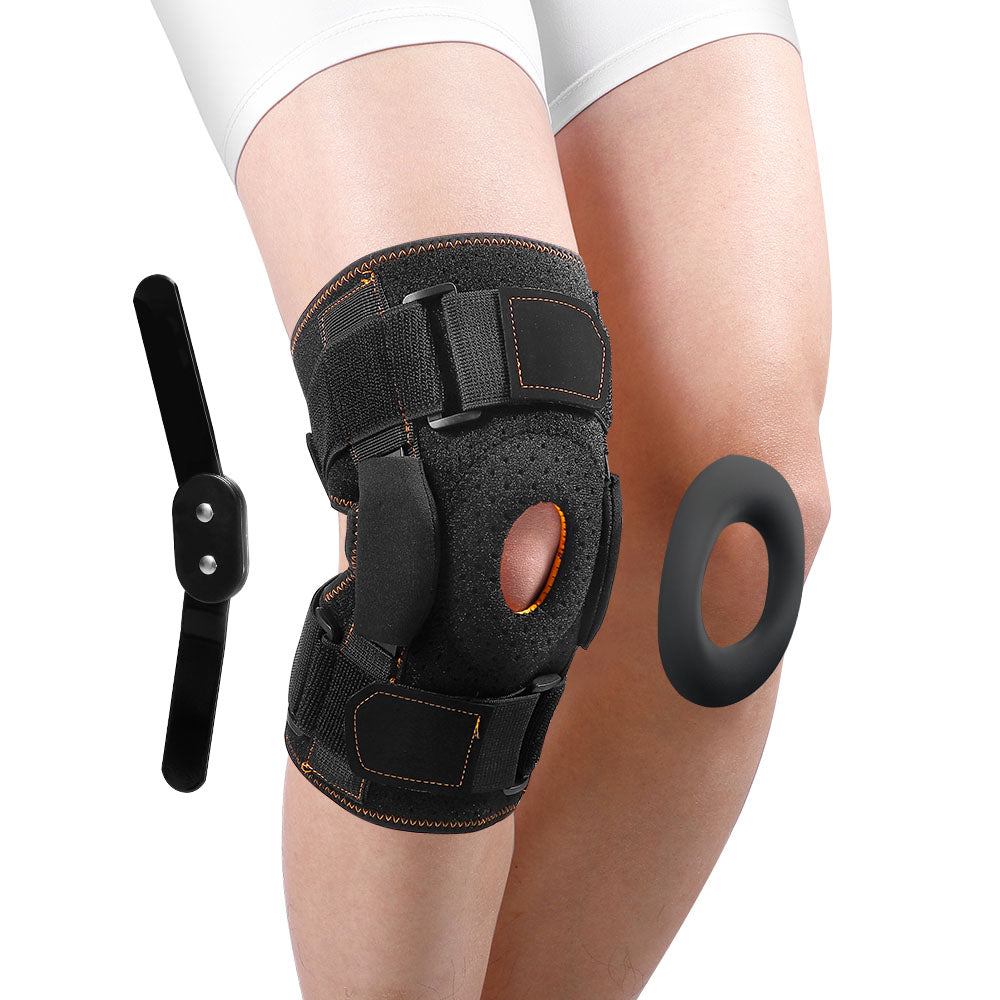How to Put on Knee Brace with Velcro

A simple description of how to correctly put on a knee brace with velcro closures may be found in this article. For support and stability, knee braces with velcro straps are frequently utilized. The efficacy and comfort of the knee brace are guaranteed by proper application. The post provides detailed instructions that cover every step, from preparing the knee region to firmly securing the straps. The article provides advice on how to wear the knee brace safely and comfortably.
fivalifitness.com
Knee Braces with Velcro
Knee braces with velcro closures are a type of knee support that uses velcro straps to keep the brace in place. The purpose of these braces is to compress, stabilize, and support the knee joint. The velcro fasteners make it simple to alter, guaranteeing that each person will have a unique fit.
The adaptability of knee braces with velcro straps is one of their main benefits. Because the velcro closures are customizable, users can alter the brace's tightness or looseness to suit their needs and comfort level. They are appropriate for people with varying knee sizes and shapes because of this feature.
These braces are popular for a variety of reasons, including:
- Injury prevention: Especially in sports involving rapid direction changes or high impact, knee braces with velcro closures can assist shield the knee from possible harm while engaging in physical activity.
- Support and stability: These braces give the knee more support, especially for people who have weak or unstable knees as a result of past injuries or illnesses like arthritis or ligament tears. They can lessen excessive mobility and stabilize the joint.
- Pain relief: By compressing and supporting the knee joint, these braces can help relieve pain caused by osteoarthritis, tendonitis, or patellofemoral syndrome.
- Rehabilitation: Following knee surgery or damage, knee braces with velcro closures are frequently worn during this phase. They can help promote healing, lessen swelling, and offer support during mobility.
✧ Fivali Adjustable Compression Knee Sleeves FKR01

- Speed up Recovery
- Pressurized and Breathable
- Optimizing Knee Movement
- Professional Nylon Fabric
✧ Fivali Adjustable Running Knee Brace for Pain FKR04
- Absorbent, skin-friendly and comfortable
- Adjustable compression and excellent durability
- Patella gel pad and side spring stabilizer
- Breathable and lightweight air-knit fabric
Preparing for Application
Preparing for the administration of a knee brace with Velcro closures entails numerous crucial measures to ensure correct fit and comfort. The following is a preparation guide:
- Clean the knee area: Use a gentle soap and water solution to thoroughly clean the knee area. By doing this, any debris, perspiration, or oils that can impede the Velcro straps' ability to stick together will be eliminated. Ensure that the area is totally dry before moving further.
- Look for cuts, open wounds, or skin irritations: Inspect the knee region for any of these conditions. It is advisable to see a medical practitioner before using the knee brace if you have any of these ailments.
- Take off any accessories or clothing: Take off any items of clothing or accessories that could make it more difficult to apply the knee brace. This applies to knee pads, socks, and pants. It's critical to work in a space that is uncluttered and clear.
- Take a comfortable stance: Choose a posture that is easy on the knees and comfortable. You have the option of lying down on a flat surface or sitting on a chair. Make sure your knee is loose and bending just a little bit.
- Prepare the knee brace: Make sure you always have the knee brace with the Velcro fasteners on hand. Learn how to use and adjust the Velcro straps so that you can put them on the brace properly.
Step-by-Step Instructions

The following are detailed steps for donning a knee brace with Velcro fasteners:
- Prepare the knee brace: Make sure the knee brace's Velcro straps are fully open and ready for application. Choose a sitting or standing position that is comfortable and permits you to reach your knee easily.
- Move your foot through the bottom opening: Turn on by sliding your foot through the bottom opening of the knee brace. Make sure the brace is properly positioned and covers the entire knee area.
- Position the brace: Place the knee brace's center over your kneecap. It should fit tightly without being uncomfortable or limiting the range of motion.
- Wrap the top strap: Pull the knee brace snugly across the front of the knee by wrapping the top strap around the rear of your leg. Ensure that the strap is positioned directly over the knee.
- Secure the Velcro closure: Attach the Velcro tab on the top strap to the proper spot on the knee brace. To guarantee a tight connection, press down firmly, but don't press too tightly.
- Repeat: Apply the same technique to the bottom strap as well. Secure the Velcro tab to the knee brace by wrapping it around your lower leg, just below the knee joint.
- Adjust for comfort and support: Review the tightness of both straps. To get a snug fit that adequately supports your knee joint, adjust them as necessary. The brace should feel just right—not too tight nor too restrictive.
- Examine comfort and range of motion: Once the knee brace is firmly fastened, move your knee through a range of motion to ensure it is comfortable and does not impede your motions. To ensure a better fit, make any necessary changes.
Always keep in mind that these are only general recommendations; for your individual knee brace, you should adhere to the manufacturer's instructions.
Tips for Comfort and Safety
When wearing a knee brace with velcro closures, take into consideration the following advice to guarantee optimal comfort and safety:
- Fit correctly: Make sure the knee brace is fitted correctly. It should fit comfortably without being too tight or constricting. The Velcro straps should not be overtightened, as this can obstruct blood flow and be uncomfortable.
- Frequent inspections: Examine the straps from time to time and adjust them if necessary. Straps may become loose with time, which could compromise the knee brace's support.
- Don't wear it for longer than necessary: Although knee braces with Velcro fasteners can offer stability and support, it's crucial to give your knee a break. Unless specifically instructed by a healthcare provider, avoid wearing the brace all the time, especially when you're sleeping.
- Speak with a medical professional: Seek medical advice if you have persistent pain or discomfort or if the knee brace doesn't seem to be giving you the support you need. They are able to evaluate the particulars of your case and make recommendations that meet your requirements.
- Observe the usage guidelines: Follow the instructions provided by the manufacturer for the appropriate use, handling, and upkeep of the knee brace with Velcro closures. There may be special guidelines on how to wear and take off each brace.
fivalifitness.com
*Disclaimer
The information provided in articles written by Fivali is intended for educational and reference purposes only. The content on this website (www.fivalifitness.com) is not intended to diagnose, treat, cure, or prevent any disease. We do not recommend self-diagnosis or self-treatment based on the information provided in our articles. Always consult a qualified healthcare professional if you have any concerns about your health or well-being.
If you are experiencing any symptoms or discomfort, we strongly encourage you to seek medical attention from a qualified healthcare professional. Only a licensed healthcare practitioner can provide an accurate diagnosis and appropriate treatment plan tailored to your individual needs.
-
Posted in
Brace, Healthy Lifestyle, Joint














